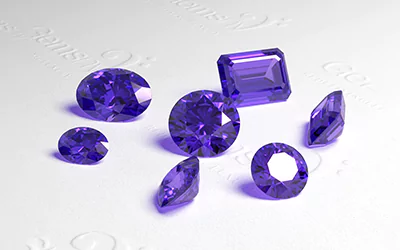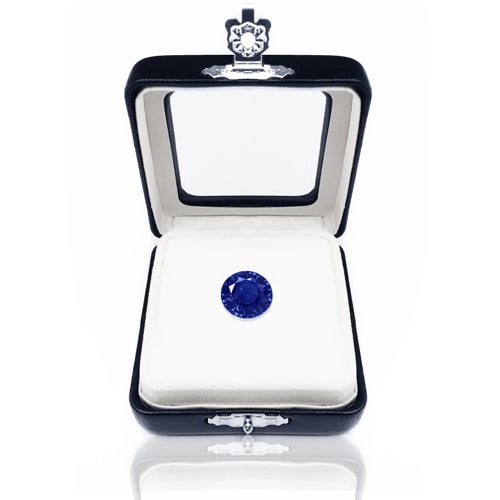Loose Natural Tanzanites Gemstones
| Compare | Image/Video | Item # | Sale Price | Minimum Wt. |
Approx. Dim. |
Shape | Quality Grade |
Lab |
|---|

About Tanzanite
Tanzanite is the fairly recent entry in the world of gemstones. It was discovered around 1967 in Tanzania on the foothills of Mt. Kilimanjaro which is the largest dormant volcano in the world. There, the mineral zoisite was found in crystal form and due to its purplish blue or violet blue it was called blue zoisite. Later, it was named after the country of its origin- Tanzania.
Tanzania is the only country in the world where this vivid blue gemstone tanzanite is found though the mineral zoisite is found in many places around the world. Since tanzanite is limited to a very small geographical area in the world it is extremely rare and said to be a thousand times rarer than diamonds.
Color & Composition
The blue color of tanzanite is due to the presence of vanadium which is the primary chromophore. There are secondary chromophores such as iron, chrome, manganese resulting in other hues in tanzanite. Tanzanite is also sometimes dichroic meaning it exhibits two colors; the one is blue and the other is red which is visible in some form of flashes when light strikes the stone in a particular angle.
Hardness and Suitability in Jewelry
The hardness of tanzanite usually ranges between 6 and 6.5 on the Mohs scale. This means that tanzanite is not as hard as an emerald, sapphire or ruby in the color gemstone category. As such it requires a little bit more care to be set into jewelry and maintained later on. However, this should not deter you from buying tanzanite jewelry because with that hardness score it still is a pretty hard gemstone to withstand the toil of everyday wear since otherwise also all of us keep our jewelry with a lot of care for that matter.
Color & Size
Due to their outstanding color and luster, tanzanites have become quite popular and since they are relatively new find their price is also quite affordable. Tanzanites also have an added advantage of size. Though it’s not easy to find the ‘big three’ color gems in large size i.e. over two carats or over five carats, tanzanites can be found in over five carats without much difficulty. This makes creating jewelry with a large center stone possible and affordable. So if you want to make a bold fashion statement, tanzanite is the stone you should consider.
Birthstone & Anniversary Stone
At GemsNY, you can find mesmerizing jewelry pieces featuring tanzanite. Tanzanite engagement rings, Tanzanite bands, tanzanite wedding sets, tanzanite earrings, tanzanite rings and tanzanite bracelets will not just complement your attire but also provide you an avenue to store value for future.
Tanzanite is the birthstone for December and it is the twenty-fourth wedding anniversary stone.
























